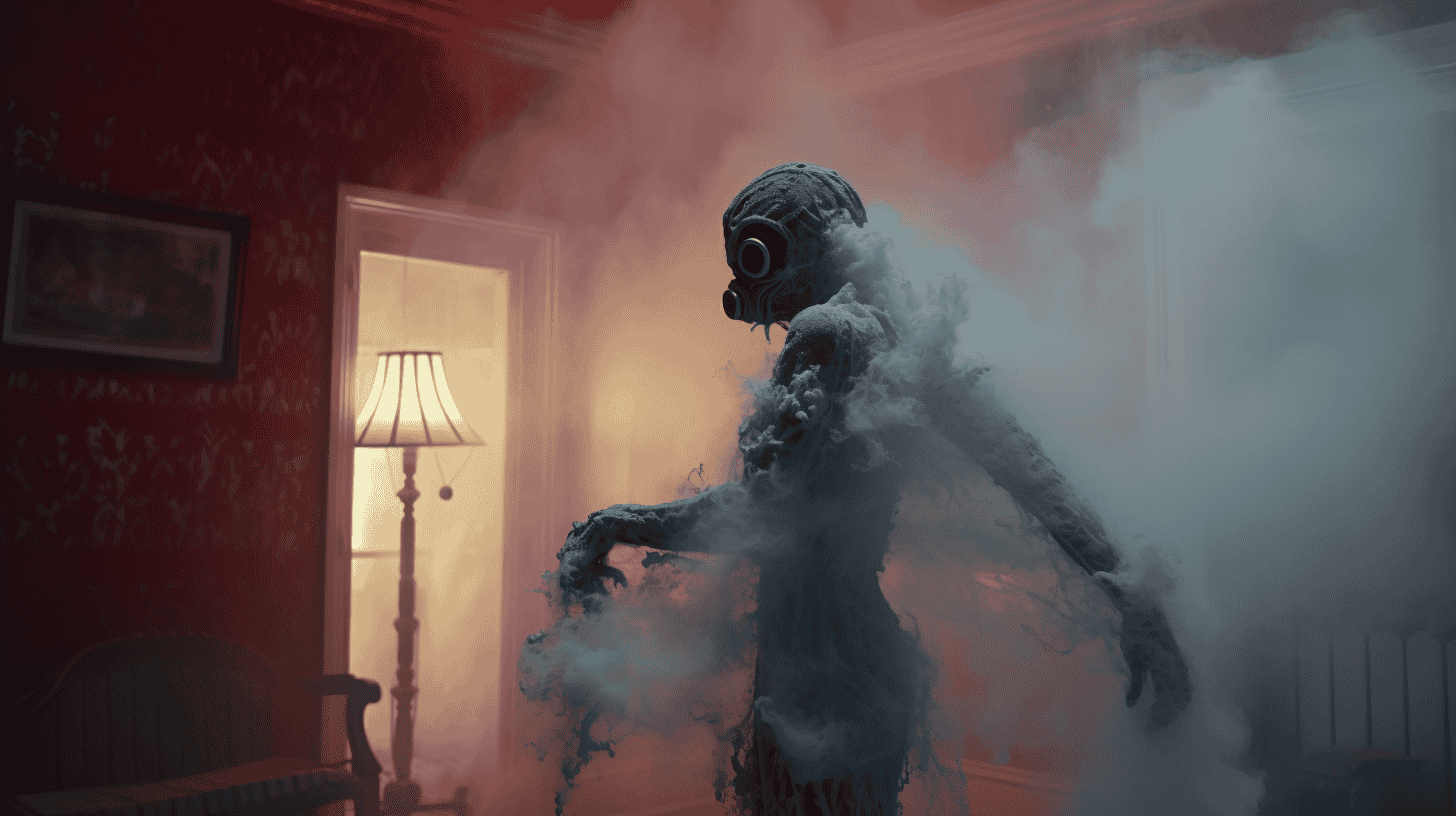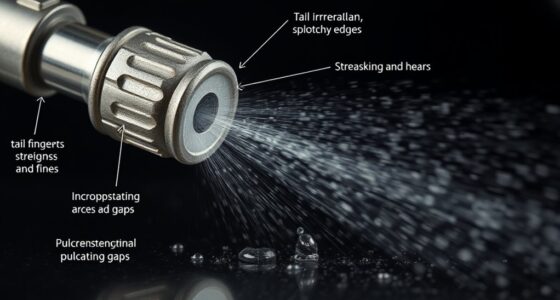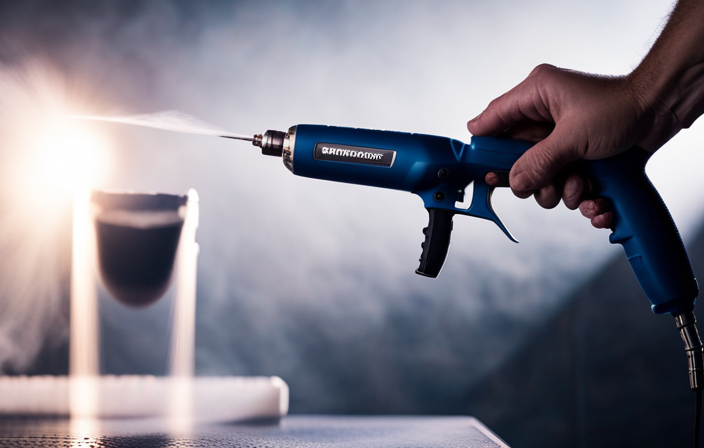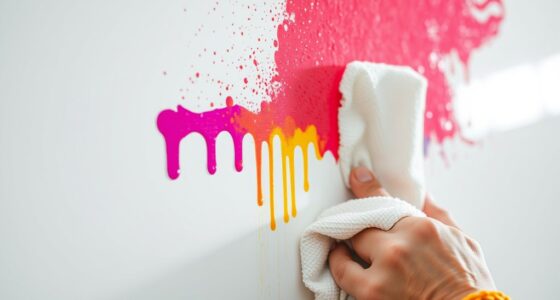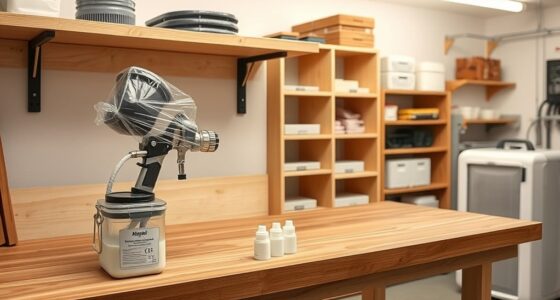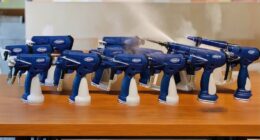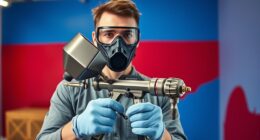Introduction
Are you tired of dealing with troublesome airless paint sprayers, whether you’re a dedicated DIYer or an experienced painting professional? Fear not! This troubleshooting guide delves into common issues faced by airless paint sprayer users and provides practical solutions to resolve them.
Whether it’s clogged nozzles, uneven spray patterns, or inconsistent pressure, we’ve got your back. So grab your tools and let’s get ready to tackle those painting projects like a pro!
Common Airless Sprayer Problems and How to Solve Them
Airless paint sprayers are a popular choice for both professional painters and DIY enthusiasts. They offer convenience, speed, and efficiency when painting large surfaces. However, airless sprayers can encounter issues that may hinder their performance like any tool. This section will explore some common problems you might face while using an airless paint sprayer and provide practical solutions to troubleshoot them.
One of the most common issues with airless sprayers is clogging. This can occur when the spray tip becomes blocked by dried paint or debris. To solve this problem, you can try cleaning the tip with warm water or a specialized cleaning solution. Additionally, using a strainer or filter before pouring paint into the sprayer’s container can help prevent clogs.
Another issue that users often encounter is uneven spraying or spattering. This could be due to improper pressure settings or a worn-out spray tip. Adjusting the pressure according to the manufacturer’s recommendations and replacing worn spray tips should resolve this problem.
Leaks are another frequent problem with airless sprayers. These leaks usually occur at connection points such as hoses or fittings. Ensuring proper tightness of these connections and inspecting them regularly for wear or damage can prevent leaks from happening.
Inconsistent spray patterns can also be frustrating when using an airless sprayer. This problem may arise from incorrect material viscosity or an improperly adjusted fan pattern on the spray gun nozzle. Following the recommended viscosity guidelines for your specific type of paint and making necessary adjustments to achieve an even fan pattern should solve this issue.
If your airless sprayer fails to start or experiences intermittent power loss, check if there is sufficient electrical supply reaching the unit by testing outlets with other devices first. If power supply isn’t the issue, inspect cords for any damages along their length before considering contacting customer support.
By understanding and addressing these common problems that can occur with airless paint sprayers, you can get the most out of your equipment and ensure a successful painting job.
Tips for Maintaining Your Airless Sprayer
Regular maintenance is key to keeping your airless paint sprayer in top condition and ensuring it performs optimally. Here are some simple yet effective tips to help you maintain your sprayer:
1. Clean after Every Use: After each painting session, make sure to thoroughly clean the sprayer. Disassemble the components and rinse them with water or an appropriate cleaning solution to remove any paint residue.
2. Check Filters Regularly: Airless sprayers have filters that prevent debris from clogging the nozzle. Inspect these filters regularly and clean or replace them as needed. This will ensure a smooth flow of paint and prevent blockages.
3. Lubricate Moving Parts: Proper lubrication is essential for smooth operation of your airless sprayer. Apply lubricant to moving parts such as pistons, rods, and swivel joints according to the manufacturer’s instructions.
4. Store Properly: When not in use, store your airless sprayer in a cool, dry place away from extreme temperatures and direct sunlight. Protect it from dust by covering it with a cloth or plastic bag.
5. Conduct Routine Maintenance Checks: Schedule regular maintenance checks for your airless sprayer to identify any potential issues before they become major problems. Inspect hoses, nozzles, seals, O-rings, and other parts for wear or damage.
By following these maintenance tips consistently, you can extend the lifespan of your airless paint sprayer and ensure its reliable performance on every project!
Conclusion
Airless paint sprayers are a valuable tool for any DIY enthusiast or professional painter. They offer efficiency and convenience in completing painting projects quickly and with excellent results. However, like any equipment, they can sometimes encounter issues that need troubleshooting.
By identifying common problems such as clogged nozzles, uneven spray patterns, or leaking seals, you can take the necessary steps to fix them and get your sprayer back in working order. Regular maintenance is also crucial to ensure optimal performance and longevity of your airless paint sprayer.
Remember to always follow the manufacturer’s instructions for proper use and maintenance of your specific model. By taking good care of your sprayer and addressing any issues promptly, you can enjoy seamless painting experiences every time.
So next time you encounter a problem with your airless paint sprayer, don’t panic! Refer back to this troubleshooting guide for step-by-step solutions. With a little patience and know-how, you’ll be able to tackle those pesky issues head-on and get back on track with your painting project!
Happy spraying!

